Canadian company OneUp Components has been producing some innovative and highly popular drivetrain items over the past couple of years, including modified derailleur cages, direct mount chainrings, and a huge 10-50t cassette hop-up kit.
But as a manufacturer of chainrings, OneUp Components is well aware of the many different standards currently found on the market and the many headaches that this can cause. For a start there’s round and oval chainrings, and then there’s numerous direct-mount cranksets including Cannondale, RaceFace, SRAM and Hope. On top of that, you’ve got Boost offsets and even Super-Boost offsets.
That’s a whole lot of SKU’s for a company like OneUp Components.
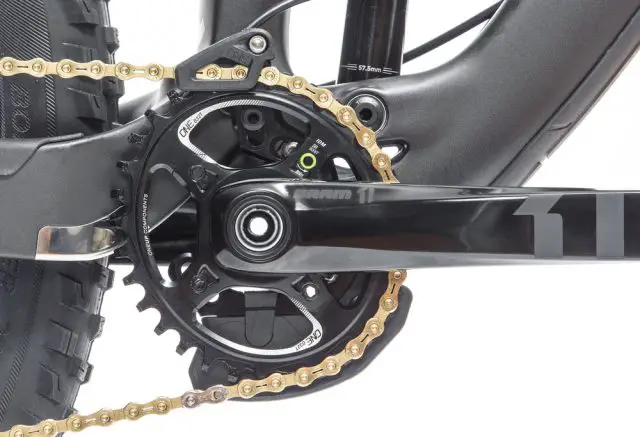
With its sights set on future-proofing (as much as one can in the bike industry…), OneUp Components has launched the Switch chainring system. Before going any further though, OneUp Components is keen to point out that Switch isn’t a new standard. Instead, it’s simply a way of creating a modular spider/chainring system that offers greater flexibility when it comes time to replace or change out a ring.
Wolftooth Components is using a similar modular system for its chainrings called CAMO, and the overall premise is the same. By turning a direct-mount chainring into two components (spider and a chainring), more combos are possible with less SKU’s and replacement chainrings are cheaper. However, the OneUp Components design is a little different. This design possesses a very clever mounting feature that offers much quicker removal and installation…
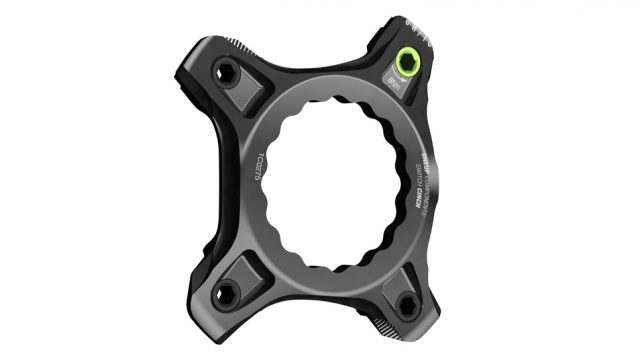
The inner part of the Switch system is the modular spider. This spider comes in a variety of different direct mount styles to suit current RaceFace, Hope, SRAM and Cannondale cranks. It’s also available in standard and Boost offsets.
The green bolt at the top right of the spider is the mounting bolt. All you need to remove the chainring is a 4mm hex key to loosen this bolt (and the three black ones). Undo them a couple of turns, and then the chainring can be rotated and pulled off, all without need to remove the cranks from the bike. Many of the direct-mount chainrings on the market require a more involved process to install and remove them, so OneUp Components is selling this feature to racers and those travelling with their bike, who might want the ability to quickly swap chainrings in the carpark before a ride or race.
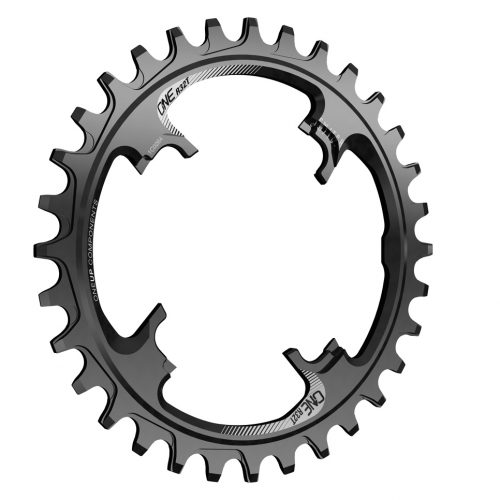
The outer chainring itself kinda looks like a 4-bolt chainring with the tabs partially removed. The tabs mate up to corresponding pockets on the central spider. From an ease of use perspective, it certainly sounds appealing, but we’d be keen to see how the design fares in the real world.
OneUp Components didn’t give us any weights in the press release, but needless to say the Switch design is likely to be heavier than an equivalent single direct-mount chainring.
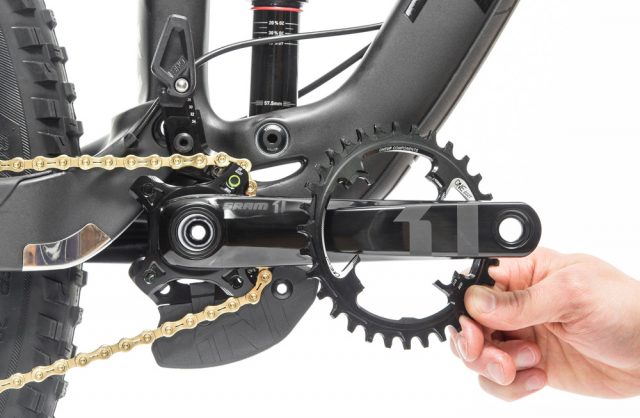
The design means you can remove and swap chainrings without having to take the cranks off the bike. As an example, the existing SRAM direct-mount chainrings require the cranks to come off the bike, before undoing three small screws in the back of the chainring that keep it mounted to the crank arm. In the case of the Switch design, all you’d need is a 4mm hex key.

Confused as to how it all goes together? Thankfully OneUp Components has made a neat little video of all the happenings with the new Switch design, which you can watch below.
Switch chainrings will sell for $63 USD, and replacement rings on their own will be $40 USD. For more information on the rings and other products, head to OneUpComponents.com.
Comments (7)
Leave Reply
Post Comment
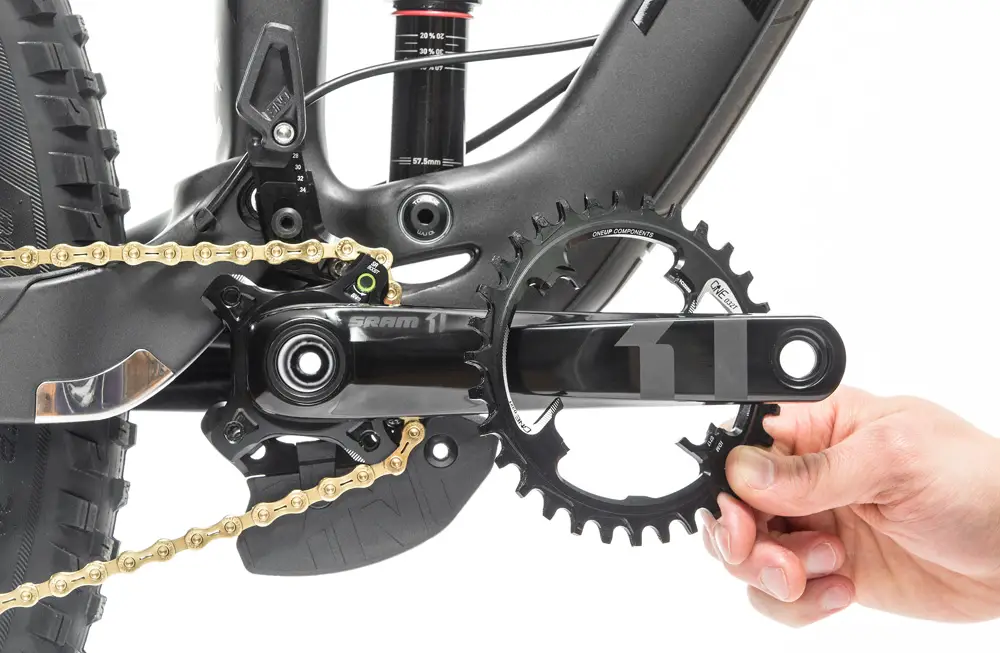
Genius. If the ring can cope with the huge torque placed upon it with only one bolt; fascinated to see if it works/test it. I am sure that it does given OneUp’s reputation and it will have done a lot of bench testing. Although, changing a chainring is a good excuse to clean out / check / replace a BB!
So if its not a new standard can you bolt any other chainrings to it? No, no you cant, because its a new standard. Move along please…
OneUp have invented a solution to a problem I suspect most mountain bike riders don’t have, which is the fast removal of chainrings, then dressed it up as a solution to a different problem. It’s neat, but let’s be honest about what it is; a way that OneUp can get mountain bikers tied-in to a proprietary system of chain ring replacements. Hats off and good luck to them for coming up with it though.
Its only a quick job if your pedal is easy to get off.
docgeoffyjones – I suspect most SPDs would fit through anyway, except maybe the biggest DH crank bros ones.
Just imagine if you could do this remotely, as you ride.
A lever on the handlebar could automatically switch the chain to a different sized chainring when you need it. How good would that be?
😉
“ir_bandito said on March 8, 2017
Just imagine if you could do this remotely, as you ride.
A lever on the handlebar could automatically switch the chain to a different sized chainring when you need it. How good would that be?”
Mate, you may be on to something there… 🙂
I am sceptical there’s enough metal engaged to stand up to robust use. SInglespeeders will wreck those rings.